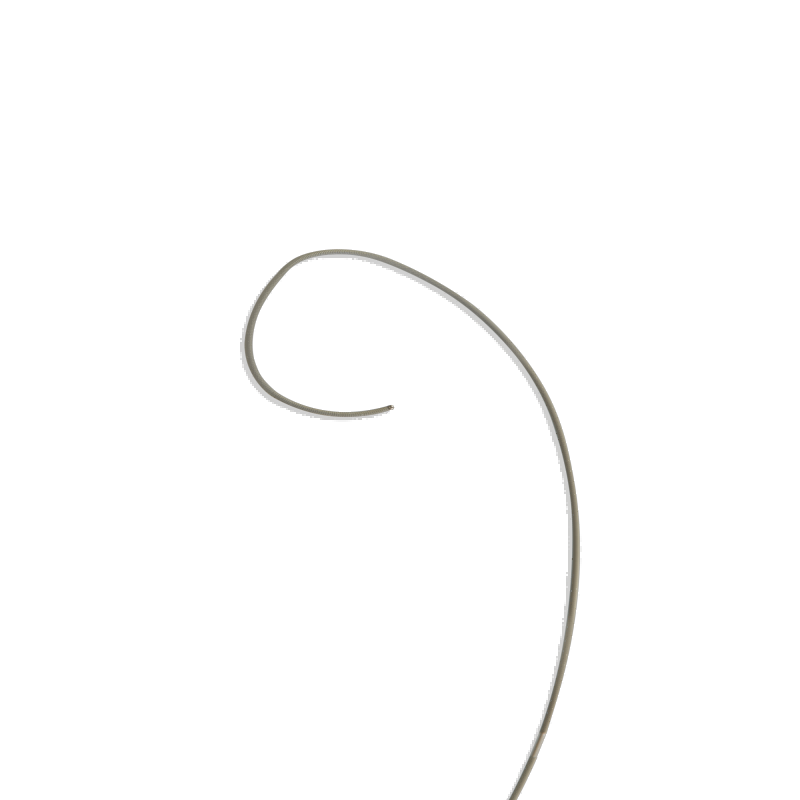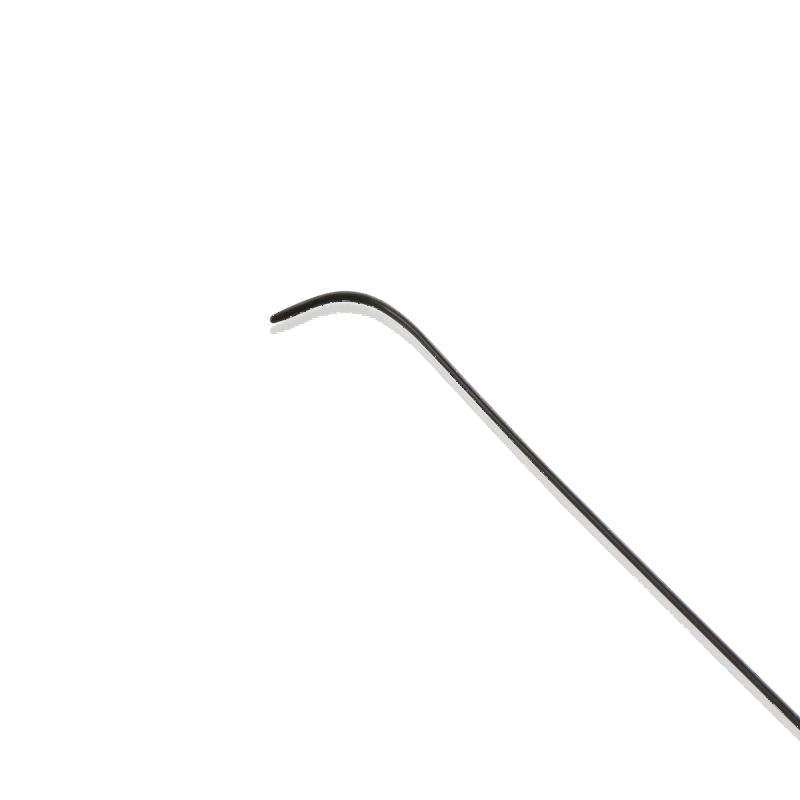Pre-shaped Guidewire
The Pre-shaped Guidewire is a specialized medical device used in various diagnostic and interventional procedures to navigate through anatomical structures with precision. Crafted with precision and using high-quality materials, this guidewire offers exceptional flexibility, durability, and maneuverability, making it an indispensable tool for healthcare professionals performing a wide range of procedures.

| Component | Design | Design Rationale |
| Core Wire | Integral 304 stainless steel core wire | Good torsional control performance |
| Longer tapered transition section at the distal end | Good tracking performance | |
| PTFE Coating | Good lubrication performance | |
| Outer Coiling Wire | Flat Wire | Good resistance to deformation and fracture |
| PTFE Coating | Good lubrication performance | |
| Inner Coiling Wire(if any) | Platinum-Tungsten Alloy | Good development performance |
- Pre-shaped Tip: The pre-shaped tip of the guidewire allows for precise navigation through specific anatomical structures, enhancing procedural efficiency and efficacy.
- Flexible Core Wire: The flexible core wire provides exceptional flexibility and support for navigating through tortuous anatomical structures.
- Hydrophilic Coating (Optional): Some guidewires are coated with a hydrophilic coating to facilitate smooth advancement through the vasculature and reduce the risk of vessel trauma.
- Radiopaque Markers: Radiopaque markers on the guidewire enhance visibility under fluoroscopy, aiding in the accurate placement of catheters and other medical devices.
The Pre-shaped Guidewire is a specialized medical device used in various diagnostic and interventional procedures to navigate through anatomical structures with precision. It is composed of high-quality materials, including a flexible core wire and a pre-shaped tip. The core wire, typically made of nitinol or stainless steel, provides exceptional flexibility and support, while the pre-shaped tip allows for precise navigation through specific anatomical structures. Optional features such as a hydrophilic coating and radiopaque markers enhance the guidewire’s performance and visibility during procedures.
The Pre-shaped Guidewire is used in a variety of diagnostic and interventional procedures, including:
- Endovascular Aneurysm Repair (EVAR): Facilitates the navigation of catheters and stent-grafts for the treatment of aortic aneurysms.
- Peripheral Vascular Interventions: Provides access and facilitates the navigation of catheters and other devices for procedures such as angiography, angioplasty, and stenting.
- Neurointerventional Procedures: Enables access to the cerebral vasculature for procedures such as embolization, thrombectomy, and aneurysm coiling.
- Urological Procedures: Facilitates access to the urinary tract for procedures such as ureteral stent placement and stone retrieval.
- Gastrointestinal Procedures: Aids in the navigation of catheters and devices for procedures such as endoscopic retrograde cholangiopancreatography (ERCP) and endoscopic ultrasound (EUS).
Related products
Movable-Core Guidewire
The Movable-Core Guidewire is composed of a flexible outer wire and a movable core, both typically made of materials such as stainless steel or nitinol. The outer wire provides support and flexibility for navigating through blood vessels, while the movable core allows for independent movement within the outer wire, providing precise control and maneuverability during procedures. Some wire guides may feature a hydrophilic coating to facilitate smooth advancement through the vasculature and reduce the risk of vessel trauma. Additionally, radiopaque markers on the wire guide enhance visibility under fluoroscopy, aiding in the accurate placement of catheters and other medical devices.
Peripheral Micro Guidewire
The peripheral micro guidewire is a specialized medical device used in various diagnostic and interventional procedures to navigate through the peripheral vasculature with precision. Composed of high-quality materials, this guidewire offers exceptional flexibility, durability, and maneuverability, making it an essential tool for healthcare professionals performing peripheral vascular interventions.
Extra Stiff Guidewire
The Demax Extra Stiff Guidewire is meticulously crafted from high-quality materials to ensure exceptional performance and reliability. Composed of a PTFE-coated stainless steel core wire and a PTFE-coated spring, this guide wire offers optimal strength, flexibility, and maneuverability for navigating through challenging anatomical structures with ease. Additionally, some models feature a radiopaque spring, enhancing visibility under fluoroscopy for precise positioning within the target area. This advanced composition guarantees superior durability, biocompatibility, and performance, making the Demax Extra Stiff Guidewire an indispensable tool for healthcare professionals in various medical procedures.
Hydrophilic Guidewire
The composition of Hydrophilic Coated Guidewires typically consists of a core material, such as stainless steel or nitinol, surrounded by a hydrophilic polymer coating. Stainless steel provides the necessary rigidity and structural integrity to the guidewire, enabling it to withstand the forces encountered during navigation through the body. On the other hand, nitinol, a shape-memory alloy, offers flexibility and elasticity, allowing the guidewire to adapt to the contours of anatomical structures without sacrificing durability.
The hydrophilic coating, usually composed of PTFE or a similar material, serves as a lubricious layer that reduces friction and enhances the guidewire’s ability to glide smoothly through the vasculature or other bodily passages. This coating undergoes a specialized manufacturing process to ensure uniformity and durability, enabling the guidewire to maintain its hydrophilic properties throughout the duration of the procedure.




